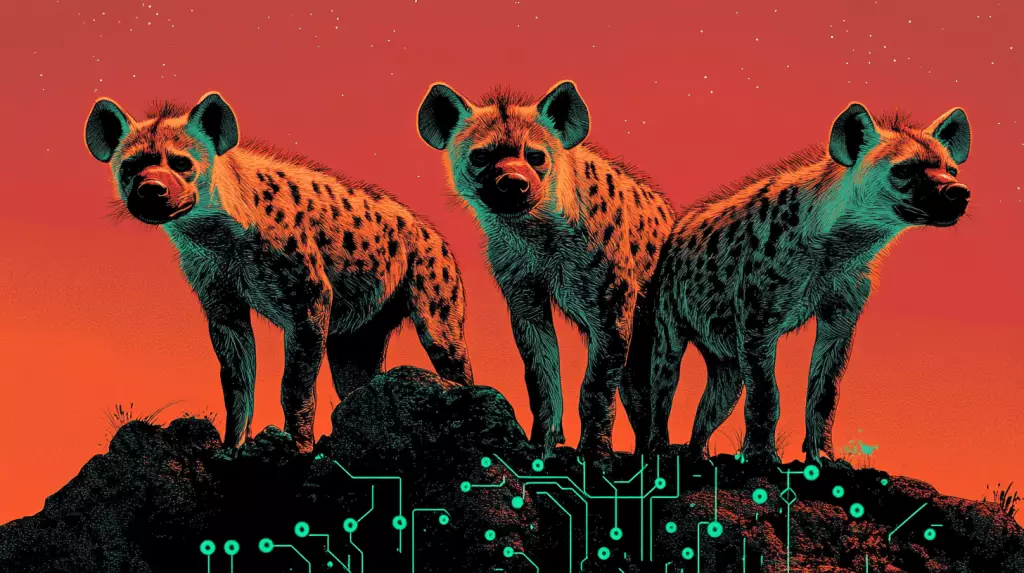In a landscape dominated by Transformer architectures, Liquid AI—a startup rooted in the esteemed grounds of MIT—has set its sights on liberating the tech industry from existing paradigms. With the introduction of its pioneering convolution-based model, Hyena Edge, the firm is not just responding to the increasing demands for efficiency in mobile AI but is also challenging the foundational beliefs about how language models should be structured. The impending International Conference on Learning Representations (ICLR) 2025 serves as a backdrop for this bold announcement, and with it comes the potential to reshape computational AI on edge devices profoundly.
Hyena Edge is meticulously crafted to outshine industry stalwarts like OpenAI’s GPT series and Google’s Gemini models, emphasizing not merely improvements in computational efficiency but enhancing the quality of language models. Given the substantial resources and time invested in developing these alternative models, one can’t ignore the implications for future AI developments: redefining efficiency could soon render conventional Transformers obsolete in specific applications.
A New Paradigm in Model Architecture
Diverging from traditional designs that lean heavily on attention mechanisms, Hyena Edge embraces an intricate integration of gated convolutions derived from the Hyena-Y family. This architectural innovation constitutes a radical departure from conventional small model designs intended for mobile applications, such as SmolLM2 and Llama 3.2. By strategically reducing reliance on grouped-query attention (GQA), Liquid AI’s approach not only optimizes performance but also suggests a noteworthy evolution in language model structuring that may resonate across the industry.
The underpinnings of Hyena Edge stem from the Synthesis of Tailored Architectures (STAR) framework, which employs evolutionary algorithms to automatically design backbones. This mechanism leverages a mathematical understanding of linear input-varying systems, creating models optimized for latencies, memory requirements, and overall quality—each crucial as the tech world pivots towards edge computing. The STAR framework symbolizes agility in model design that aligns perfectly with the future demands of AI, showcasing that innovation does not solely arise from size but also from smart architectural choices.
Real-World Performance: A Game-Changer
In tangible testing on devices such as the Samsung Galaxy S24 Ultra, Hyena Edge exhibited up to 30% faster prefill and decode latencies relative to its Transformer++ counterpart—a revelation that could drastically shift consumer and industry expectations about mobile AI. In an era where low latency is synonymous with user satisfaction, the improved performance of Hyena Edge becomes its defining characteristic. The stark reduction in RAM usage during inference signifies its suitability for environments constrained by resources, empowering mobile devices to efficiently execute advanced AI tasks without the cloud’s backing.
Hyena Edge’s training on an extensive dataset comprising 100 billion tokens included rigorous evaluations across standard benchmarks, including Wikitext and PiQA. The results were compelling; whether matching or outperforming the so-called heavyweights of the Transformer landscape, its advancement in perplexity and accuracy heralds a new standard for edge-optimized models.
These performances suggest an emerging trend wherein technological enhancements do not compromise predictive capabilities. This misconception that optimization inherently sacrifices output quality is a traditional narrative in model design, but Hyena Edge dares to rewrite that story.
Visual Insights into Evolution and Efficiency
Liquid AI’s commitment to transparency is evident in their recent video walkthrough showcasing the model’s development journey. This visual narrative not only elucidates the successive refinements in architecture but also provides a crucial understanding of the changing dynamics within model operations, including shifts among operator types like Self-Attention and various Hyena variants.
The detailed portrayal of these transformations over successive iterations grounds the discussion in empirical realities, thus fostering a narrative that encourages further experimentation and innovation. Such openness in revealing how minor adjustments can lead to significant efficiency gains could inspire a generation of AI developers to explore new pathways free from the constraints of existing dogmas.
The Future of AI with Liquid AI
As the company prepares to open-source Hyena Edge along with a suite of Liquid foundation models, it embarks on a journey not just towards commercial viability but also towards redefining the role of general-purpose AI systems. By facilitating access to these models, Liquid AI positions itself at the forefront of democratizing AI technology, potentially enabling smaller companies and individual developers to harness advanced capabilities previously confined to well-funded entities.
Hyena Edge represents much more than an innovative model; it serves as a beacon for the future of edge AI solutions. With its promise of efficiency and performance, the model sets a high bar, challenging the entrenched norms and encouraging the industry to imagine what lies ahead. As the relentless march towards more capable and accessible AI systems continues, models like Hyena Edge may redefine the landscape entirely—one convolution at a time.


Leave a Reply